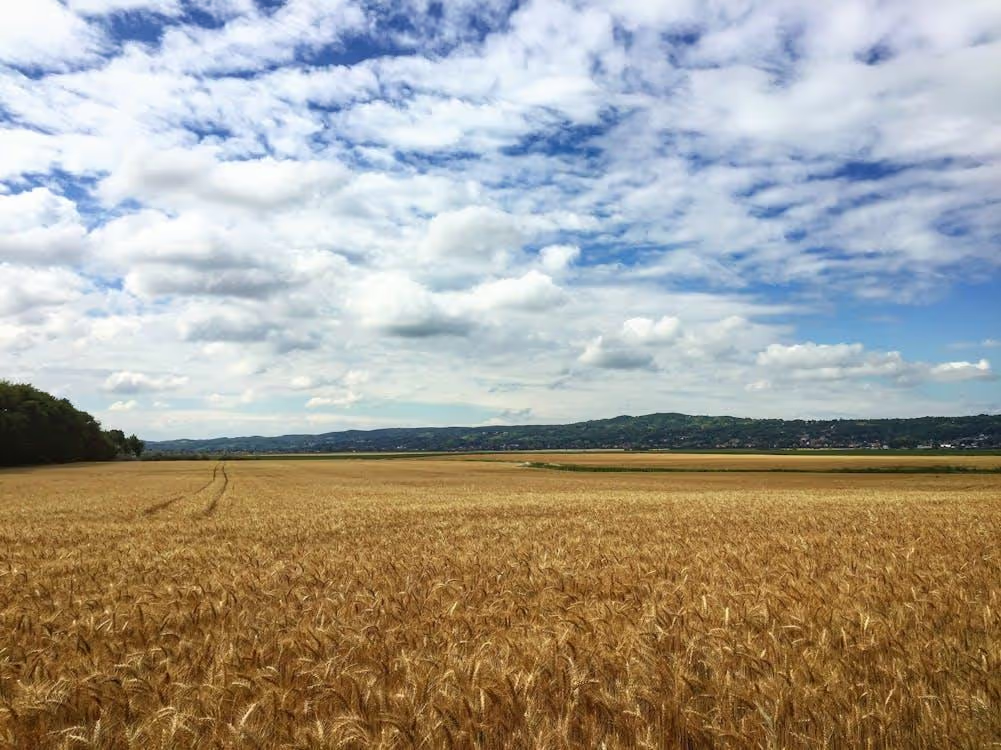What To Do After Inheriting Land in South Dakota?
Return to BlogGet cash offer for your land today!
Ready for your next adventure? Fill in the contact form and get your cash offer.

By
Bart Waldon
You've just found out you've inherited a piece of South Dakota. Yep, you read that right - a chunk of the Mount Rushmore State is now yours. Pretty cool, huh? But before you start planning your own personal Deadwood, let's talk about what this really means and what you should do next.
First off, congrats! Land in South Dakota isn't just any old dirt. We're talking prime real estate here. In fact, the USDA's 2023 Land Values Summary shows that farm real estate in South Dakota shot up by a whopping 14.8% from the previous year. That puts the average value at $2,780 per acre. Not too shabby, right?
But here's the kicker - this jump is way above the national average increase of 7.4%. And if you've lucked out with land in the east-central region? Well, according to South Dakota State University Extension, non-irrigated cropland there saw an even more impressive 18.7% increase from 2021 to 2022. Looks like you might be sitting on a gold mine... or at least a really valuable corn field.
Now, before you start dreaming of your new life as a land baron, let's get real about what you're dealing with. South Dakota isn't just one big, flat prairie (sorry to burst your Little House on the Prairie bubble). Nope, this state's got range. We're talking everything from the rugged Black Hills in the west to fertile farmlands that'd make any crop feel right at home in the east.
If you've inherited land here, you've got a piece of this diverse pie. Maybe it's sprawling farmland where corn and soybeans fight for space. Or perhaps it's a rugged patch of the Black Hills where bison roam and gold still glitter in streams.
The point is, your new land isn't just a plot on a map. It's a slice of South Dakota heritage, and with it comes a whole bunch of decisions you'll need to make. So, let's roll up our sleeves and dig into what you need to know about your new property.
What's Your Land's Deal?
First things first - you need to figure out exactly what you've got on your hands. Is it farmland that's been growing crops since your great-grand pappy’s day? A forest that's never seen an axe? Or maybe it's a sweet spot for hunting that local sportsmen have been eyeing for years.
Here's a quick rundown of what your land might be:
- Agricultural land (think cornfields or cow pastures)
- Forested land (hello, Black Hills!)
- Recreational land (hunters and campers, rejoice!)
- Residential or commercial property (future site of South Dakota's next boom town?)
- Mineral rights (there's gold in them thar hills... maybe)
Each type of land comes with its own quirks and perks. That prime farmland in eastern South Dakota? It's like catnip for farmers looking to expand. A forested parcel in the Black Hills? You might be sitting on a goldmine of timber or the perfect spot for a rustic getaway.
Show Me the Money (aka Valuing Your Land)
Now for the million-dollar question (or maybe multi-million, who knows?) - what's your land worth? Getting this right is crucial, so don't just eyeball it and guess. Here are some ways to get a solid estimate:
- Hire a pro: Get a licensed appraiser who knows South Dakota land like the back of their hand.
- Play detective: Look up recent sales of similar properties nearby. It's like land stalking, but legal.
- Hit up the county: Check out the most recent tax assessment. Just remember, this might be as outdated as last year's almanac.
- Chat up local real estate folks: They've got their finger on the pulse of the local land market.
Word to the wise: Land values in South Dakota can be as unpredictable as a prairie thunderstorm. They can vary wildly based on location, soil quality, water rights, and probably which way the wind is blowing that day. So, don't be shy about getting multiple opinions.

The Not-So-Fun Stuff: Legal and Financial Obligations
Inheriting land isn't all stunning vistas and dreams of your own private buffalo herd. There's some nitty-gritty stuff you need to deal with too:
Property Taxes
Good news - South Dakota's property taxes are on the low side compared to many states. Bad news - you still have to pay them. Find out what the annual damage is and make sure you're ready to cough up the cash.
Liens and Mortgages
Check if there are any outstanding debts hanging over your new property like a dark cloud. You don't want any surprises down the road.
Zoning Laws
Before you start planning that combination ostrich farm and rock festival venue, check local zoning laws. They might put a damper on your wild ideas faster than you can say "noise complaint."
So, What's Next? Your Options Laid Out
Alright, so you know what you've got and what it's worth. Now what? Here are your main options:
Keep it and Use it
Maybe you've always dreamed of being a farmer, or you fancy yourself the next Deadwood saloon owner. If so, consider:
- Keeping the current use (farming, ranching, etc.)
- Developing it for something new (that ostrich farm is still an option... maybe)
- Using it for your own enjoyment (hunting, camping, or building your dream cabin)
Lease it Out
Not ready to get your hands dirty? Leasing could be your ticket to making money while someone else does the work:
- Lease it to farmers or ranchers
- Set up hunting leases
- If you've got minerals or other resources, those can be leased too
Sell, Sell, Sell
If keeping the land feels more like a burden than a blessing, selling might be your best bet:
- List it with a real estate agent (good for unique or high-value properties)
- Sell to the neighbors (they might be itching to expand)
- Try an auction (especially good for farmland)
- Sell to a land buying company like Land Boss (quick and easy, but might not get top dollar)
The Real Deal on Selling Land
Now, selling land isn't like selling your old truck on Craigslist. It can be trickier than a rodeo cowboy:
- The market's about as stable as a bull in a china shop
- Buyers can be scarcer than rain in a drought
- You might need to do more marketing than a carnival barker
- Negotiations can get more complex than a prairie dog's tunnel system
All this means it typically takes 1-2 years to sell vacant land. If you're in a hurry, a company like Land Boss might be your best bet, even if it means taking a bit of a hit on the price.
Don't Go It Alone
Unless you're secretly a land management guru, you might want some help:
- Real estate attorney (for all that legal mumbo-jumbo)
- Tax advisor (because the tax man always cometh)
- Land management specialist (if you're keeping the land)
- Real estate pro (for insider knowledge on selling or leasing)

Final Thoughts
After all this, it's decision time. Keep it, lease it, or sell it - there's no one right answer. It all depends on your situation and goals.
If selling's your game, weigh your options carefully. The traditional route might get you a higher price, but it'll take time and effort. Companies like Land Boss offer a quicker, easier option, which might be just what you need if you're looking to wash your hands of the whole deal fast.
Remember, inheriting land in South Dakota isn't just a windfall - it's a responsibility and an opportunity. Whether your new land becomes your cash cow, your family legacy, or your ticket to greener pastures, the choice is yours. Just make sure it's an informed one. Now go forth and land like a boss!
